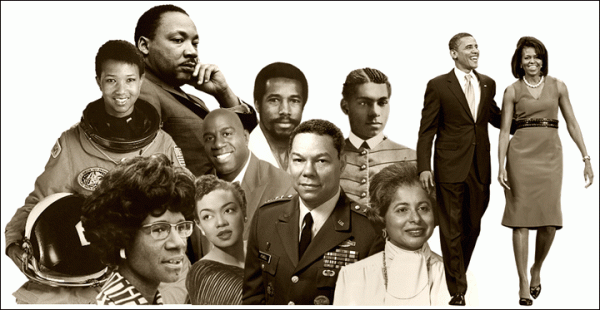
It’s February—a great time to introduce your kids to Black history! With so many celebrations, commercials and programs for Black History Month, your child may even be asking you about their heritage. Since the history of Black Americans is so rich, you may feel intimidated about how to start conversations with your kids. To help you and your kids get the most out of those first conversations about Black History, here are some tips.
Start with their interests. All kids have something they love. Maybe it’s trains, princesses, sports or dolls. Use those interests to engage them in learning more about Black History. For example, my daughter loves princesses. So I shared with her that Princess Tiana from The Princess and the Frog was the first Black Disney princess. My son loves basketball, so I share facts about Black players in the NBA while we watch the games.
Share history in the form of stories. If you haven’t figured it out already, kids love stories. Pick up books from the library featuring Black characters. If you are so blessed, find elders who are willing to share stories about their experiences. After all, Black History isn’t just about honoring famous people, it’s about remembering the experiences of Black Americans from all walks of life.
Go exploring. Especially in February, there are many events and places to see. Take advantage of these activities. If your area has a Black history museum, grab the kids and go. If you live in an area with multiple landmarks, such as historically Black neighborhoods or homes of famous Black Americans, take a tour by foot, bus, or car.
Use relatable objects, activities and places to start conversations. Passing a traffic light? Tell them a Black man, Garrett Morgan, invented the traffic signal. Cooking? Try some “soul food” recipes while discussing the relationship between Black Americans and food. Are there any facts related to your geographic area that might be interesting? We live in Metro Detroit, so we tell our kids about famous Black Americans who grew up in the area, such as Dr. Ben Carson. When we go down South, we tell them stories shared with us by our grandparents about living in the Jim Crow era.
Keep it simple and fun. If Black History feels dull and boring or long and complicated, kids won’t want to learn more. You may be tempted to give kids the whole story on slavery and Jim Crow, but that may be more than they can handle at a young age. Kids will let you know if you’ve shared too much either through their behavior or words. My son is quick to tell me if I’ve given him more information than he can process. You want your kids to come back for more knowledge, so keeping it fun is key.
Here are some online resources you can check out for more information:
Scholastic Kids Press Corps page on Black History has stories, by kids, on different Black History topics: http://www.scholastic.com/browse/collection.jsp?id=706
Encyclopedia Britannica has teacher activities that parents can adapt for use with their kids: http://www.britannica.com/blackhistory
Family Education has a Black History page with coloring pages, quizzes, links and other activities: http://fun.familyeducation.com/black-history-month/holidays/32871.html
Introducing Black History may feel challenging at first. But by integrating it into your everyday activities and experiences, you can make it fun and engaging for you and your kids.
Ladies, how do you introduce your children to black history? Share your experiences and advice below.
Ebony Reddock is a wife and mother of an eight year old and a four year old, as well as a writer, researcher and advocate for mothers. She blogs at her webpage, ecreddock.com


